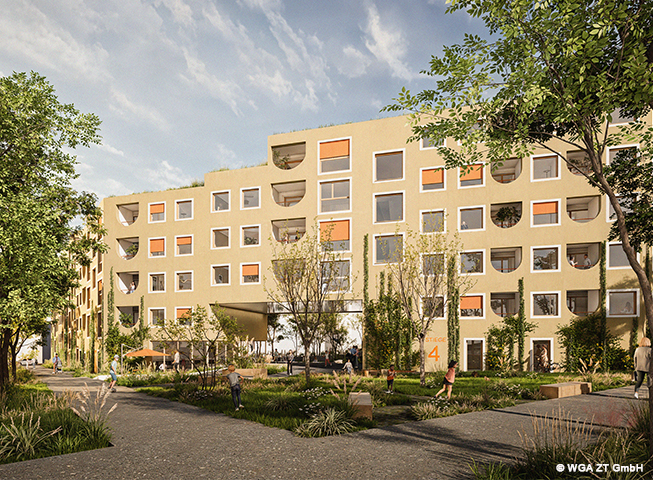The location at Klausenburger Straße 33 in Vienna’s 10th district is being redefined through an innovative, barrier-free community building. In the midst of a dynamic urban environment, the new, sustainable residential building is intended to create an interaction with the existing architecture and the surrounding area. The building heights are staggered in a clever way that makes optimal use of the permitted volume, while respecting the character of the district.
Balconies and protected loggias offer residents interior spaces that can be used for personal retreats and for designing green oases, which increase the comfort of living. The common room is also expanded by the protected inner courtyard, which users can enjoy as an exclusive open space. Bicycle storage rooms, stroller parking spaces and a laundry room on the ground floor complete the residential offerings of the new development. Commercial uses are specifically located on the corner of Hebbelplatz, which strengthens the lively interface between residential areas and urban areas. A pleasant and relaxing living environment is created by large playgrounds, green lounge areas and largely unsealed areas.
Thanks to reduced corridor areas and a compact sanitary box, which is supplied as a prefabricated module, the living areas can be arranged flexibly, creating more spacious living areas.
The concept incorporates brick walls to ensure sustainable, energy-efficient construction. The high heat storage value ensures optimised energy efficiency, and the excellent sound insulation guarantees a high quality of life.
For sustainability reasons, the construction time of interfaces defined by prefabricated sanitary components is reduced, resulting in minimised expenses.
